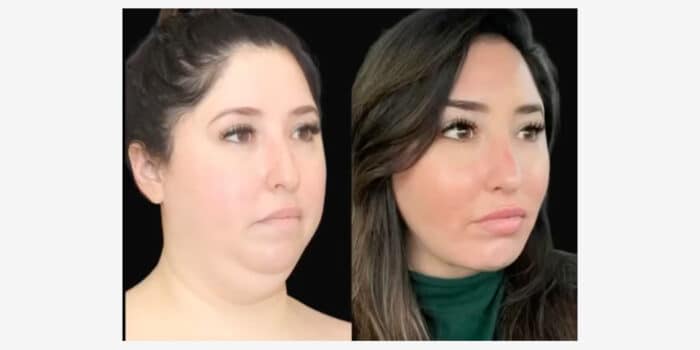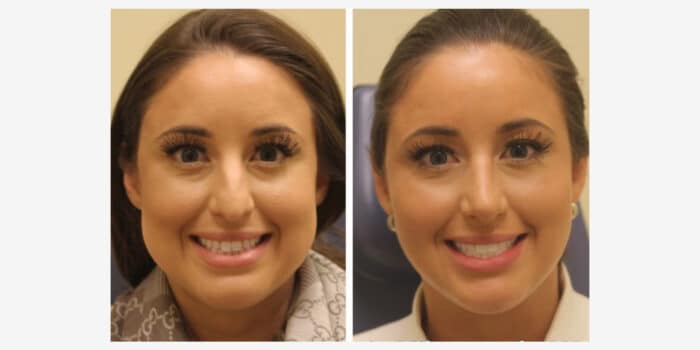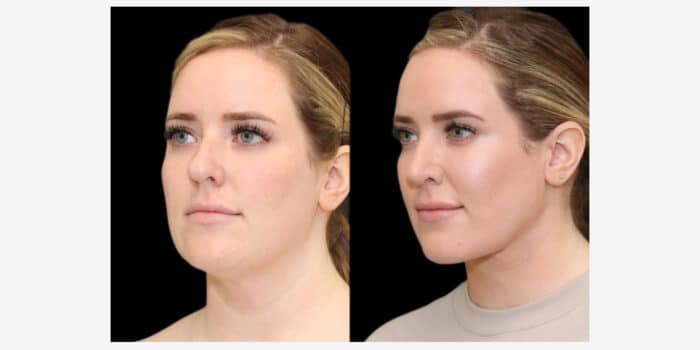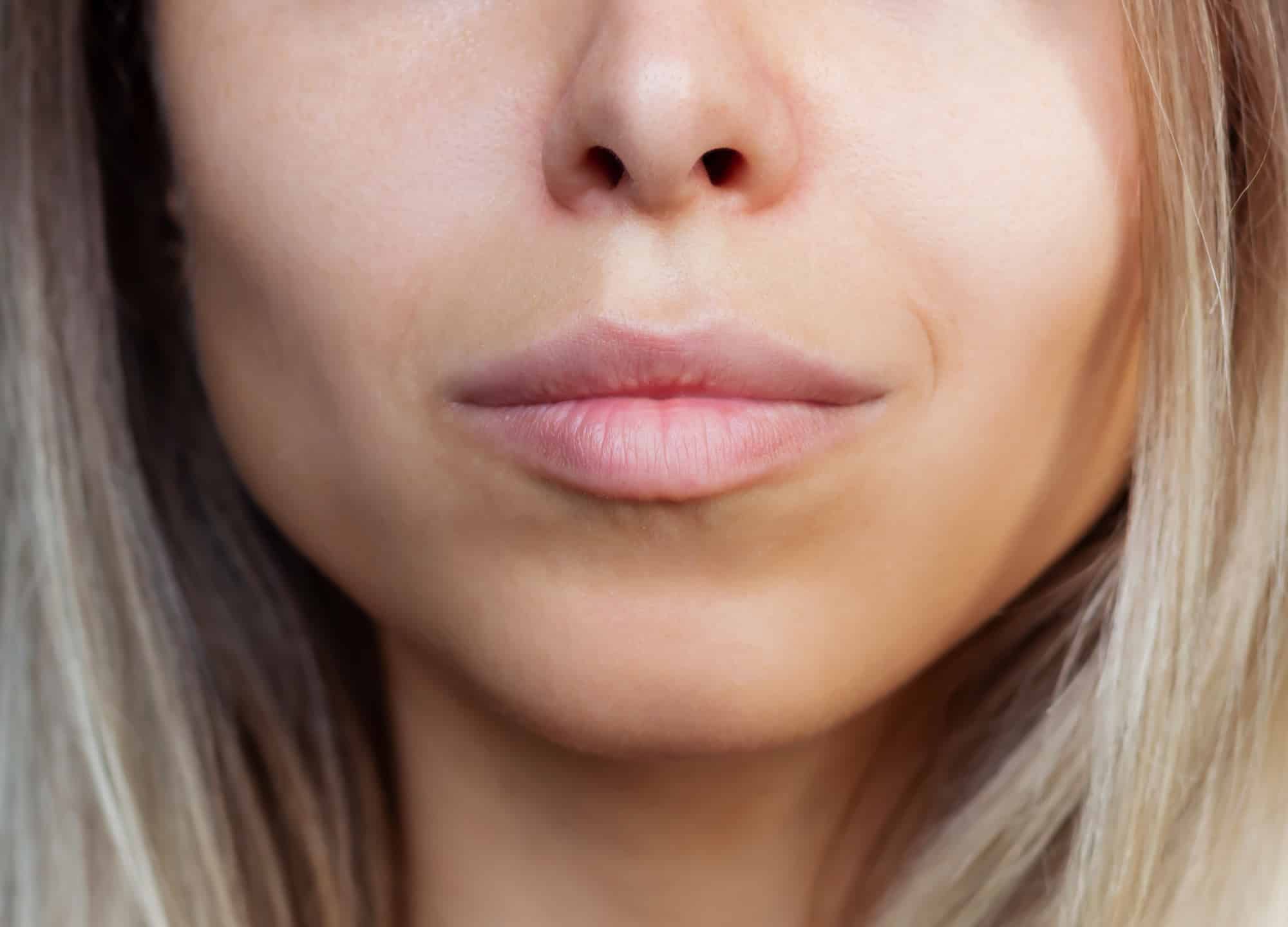There’s probably not a soul among us who wouldn’t like to have the bone structure of a supermodel, but the majority of us have to fake it with makeup, facial implants, injectables, or even overexaggerated facial expressions (you know, like Ben Stiller as Zoolander.) However, for those of us who have a little excess fat in the lower face that stubbornly stuck around after the rest of our baby fat faded away, there’s a surgical option: buccal fat removal.
“‘Blue Steel’ [from Zoolander] is the exaggerated buccal fat look—that’s the area we’re talking about,” explains Dr. L. Mike Nayak, a board-certified plastic surgeon in St. Louis. By removing some of the fat pad in this part of the cheek, the area “goes from convex to concave.” While not everyone is a candidate for this cheek-augmentation procedure, those with naturally fuller faces—like Chrissy Teigen, who got buccal fat removal some time ago—may see a significant difference in their facial balance.
For the unfamiliar: Buccal fat pad removal typically requires local anesthesia (unless you’re doing additional procedures, which could call for general anesthesia) as well as a small incision on the inside of either cheek, which is then closed with dissolvable sutures. It comes with some discomfort and swelling.
When it’s done well, the results of buccal fat pad removal can be remarkably subtle, while, as with many facial plastic surgery procedures, poorer outcomes can age the patient beyond their years—and past the point of facial rejuvenation. To better tell what kind of results you’re seeing from doctors’ websites and social media feeds, we consulted with board-certified surgeons, who broke down exactly what to look for in quality before-and-afters of buccal fat removal surgery.
1. Facial expressions, angles, and lighting
With any set of before and after photos, you’re looking for consistency, especially in the way the portrait of the patient was taken. In fact, surgeons are meant to ascribe to certain guidelines when creating images for a photo gallery. When you’re reviewing before and after shots on your own, look for the same expressions in both (a patient should not be smiling in one image but not the other, for example) and that the subject is facing the same direction—ideally, at a three-quarter view, as this is the best angle from which to judge a buccal fat removal procedure (more on this later).

Photo editing makes it easy to cover a multitude of surgical sins, even if a provider is not explicitly trying to alter the look of their results but rather create a more balanced image. However, merely adjusting the lighting afterward with software can affect the appearance of the outcome more than you’d think. To ensure the lighting is consistent across both photos, Dr. Nayak suggests looking at the patient’s pupils. “Sometimes, in a before photo, the surface of the eye is all dark, because the light is all from overhead lighting,” he explains. “In an after photo, you might see the reflection of the flash or the reflection of the ring light or the reflection of the window they’re standing in front of on their pupil.”
2. Improved facial balance
An easy way to know if you’re a good candidate for buccal fat removal is to examine your lower cheek area and jawline. If they’re disproportionately full for your weight and age—”say, [the patient] is in their 30s and they still have this kind of chipmunk look to them,” says Dr. Karam—you may qualify for this surgery. A good before photo will show a round face shape and chubby cheeks, then [the after photo will] portray a face that is more top heavy.
“The emphasis of the face seems to be a couple of inches higher [in a good after photo],” says Dr. Nayak. “Instead of the balance of the face resting at the plane between your top and bottom teeth, it’s now resting at the cheekbone, just under the eyes, causing the point of maximum focus of the face to go up.” For this reason, Dr. Nayak commonly performs buccal fat removal as part of a facial fat rebalancing procedure, widening the top part of the cheek to create a more harmonious look to the face.

3. Consistently good outcomes
This is true of any plastic surgery procedure but especially buccal fat removal. You want to make sure you review many examples of a surgeon’s work when performing this surgery, as once the fat is removed during a cheek reduction, it’s permanent—and filler can’t really help restore that lost volume to your facial appearance to the same degree.
“It’s super important to understand whether a provider specializes in this type of procedure and they’re doing a lot of them,” says Dr. Karam. By reviewing dozens of before and afters from just one expert-level buccal fat removal surgeon, you’ll get a sense of how consistent their cosmetic-surgery work is despite any variance in individual results. After all, “just about any surgeon can hit a home run every once in a while,” Dr. Karam points out. For an even higher likelihood of satisfaction from your surgery, look for before and afters of patients with a facial configuration that is very similar to yours. It’ll be the most accurate representation of what your result could look like.
4. Natural contours and highlights
Think of heavy contouring and highlighting makeup circa 2016—cosmetics connoisseurs carved out cheekbones with a product several shades deeper than their skin tone, then added even more dimension by adding a lighter and often shimmery shade to the high point of the cheek. While that extreme makeup trend has waned, buccal fat removal provides a comparable (if not subtler) and permanent result.
“That cheek goes from full and bright, in the buccal area, to either flat or slightly concave and dark,” says Dr. Nayak of a good result. “You’re seeing the contour change.” And while a three-quarter view of a cheek that’s been contoured with makeup will betray the wearer’s true bone structure, it will accurately show the outcome of a buccal fat removal surgery. “The best way to see it is at the three-quarter view of the cheek that is farther away,” says Dr. Nayak. “You see the cheekbone contour, and then it coming in at the buccal region.”

And while you may crave a dramatically sculpted cheekbone, you really don’t want an extreme result from buccal fat removal. “In the ’70s or ’80s, buccal fat removal was very popular because of the aesthetic ideal of the sucked-in, thin-face, model cheek,” recalls Dr. Karam. “It created a lot of deformity of over-removal of the buccal fat pads.” As we age, facial volume naturally dissipates, and if you’ve taken away a lot of it with buccal fat removal, you’ll end up looking gaunt and hollow rather than chiseled and chic.











